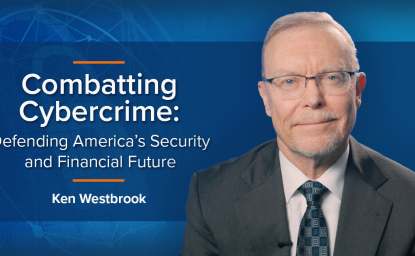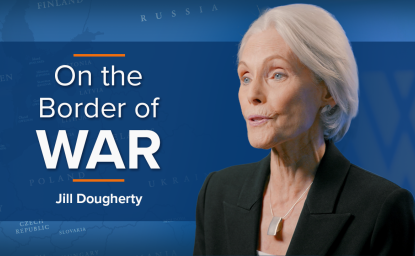Called a modern-day form of slavery, victims of human trafficking are often forced, defrauded, or coerced into sexual or labor exploitation. According to the U.S. Department of State, it is among the fastest growing criminal activities with more than 700,000 people, mostly women and children, trafficked worldwide annually, including 50,000 people into the United States. Victims become ensnared into prostitution, pornography, and other forms of commercial sexual exploitation or slavery-like labor conditions in factories, fields, and homes.
The Woodrow Wilson Center explored this subject on January 6 during a half-day conference co-sponsored by The Middle East Project and The Conflict Prevention Project. The conference focused on human trafficking in various parts of the world and regional responses toward combating this problem.
The Trafficking Pandemic
Ambassador Nancy Ely-Raphel, former director of the Office to Monitor and Combat Trafficking in Persons at the State Department, described human trafficking as "the dark side of globalization," a phrase quoted throughout the conference.
Referring to the State Department's second Annual Trafficking in Persons Report, she noted the report includes a three-tiered country list, which ranks governments based on their efforts to criminalize and prosecute trafficking. To view this report, see State Department Human Trafficking Report. Mandated by the Trafficking Victims Protection Act of 2000, the Report serves to assist with policy strategies in combating human trafficking. While admitting that much work needs to be done, she highlighted countries such as Korea, Romania, and Israel, which have aggressively pursued anti-trafficking initiatives. This international problem requires global cooperation.
Ely-Raphel said, "Governments must think beyond their borders when it comes to trafficking, because traffickers do."
Panelist Andrea Bertone remarked on the global impact of trafficking. Bertone is associate director of the College Park Scholars International Studies at the University of Maryland at College Park and associate director of Project Hope International—a Washington-based nongovernmental organization (NGO) rooted in fighting child and female prostitution and trafficking in Southeast Asia and the United States. She linked human trafficking to the transnational social movement and provided a brief history of the movement, from the 1910 Suppression of the White Slave Traffic to the United Nations Trafficking Protocol of 2000.
Emek Ucarer, assistant professor of Public Relations at Bucknell University, spoke on combating trafficking in women and NGO involvement in European Union policies. She said that most countries address trafficking as a migration issue, concentrating efforts on legislating barriers to trafficking at the borders, including attempts to tighten border controls, scrutinize visa policies, and deport individuals-primarily the trafficked women-who have been caught. Yet this approach is actually ineffective against crafty traffickers and pays insufficient attention to the social causes and consequences of trafficking, Ucarer said.
An alternative line of reasoning focuses on the sexual exploitation and abuse suffered by trafficked women. It focuses on the criminal behavior of the traffickers and seeks to provide protections for the trafficked. "However, the lack of consensus on key concepts in this debate—prostitution, voluntarism, abuse, coercion—has frustrated contemporary efforts to develop an effective human rights framework to address trafficking in women," she said.
Recently, the European Union (EU) launched efforts to combine both the migration and human rights approaches in combating trafficking. In addition to attempting to create an integrated approach, the EU is also establishing formal linkages with NGOs and incorporating their expertise as well as their financial and human resources into the EU's efforts.
From the Middle East to Southeast Asia
Mohammed Mattar, co-director of the Protection Project of the Foreign Policy Institute at Johns Hopkins University's School of Advanced International Studies, focused on the trafficking of humans in the Middle East. He commented on the issues distinguishing the Middle East from East Asian countries: arms trafficking, regime change, oil, and Islamic fundamentalism. Mattar linked oil to trafficking, since people are often trafficked into Middle Eastern countries to work in the oil industry. Many women from Bangladesh, Indonesia, the Philippines, India, Pakistan, Sudan and Sri Lanka are trafficked to the Middle East to work as domestic servants for wealthy oil dependent families. In addition, Pakistani, Indian, and Bangladeshi children as young as 2 are routinely kidnapped or sold by their parents or relatives to be used as camel jockeys in the Gulf States.
Mattar emphasized the difference between exploitative labor and labor trafficking as well as the difference between smuggling of migrants, a crime against the state, and illegal trafficking, a crime against the individual. And although prostitution is illegal according to the Koran, it is legal in many Islamic countries including Turkey, Bangladesh, Indonesia, and Lebanon. If faith-based organizations are made aware of the current trafficking situation, they will fight in the struggle since the Koran advocates the eradication of slavery, thus human trafficking, Mattar suggested.
Christina Arnold, director of Project Hope International, a Washington D.C. NGO dedicated to combating human trafficking, focused her remarks on Thailand and the role of Thai NGOs and implementation programs for victims. In particular, Project Hope International (PHI) works in partnership with the Thai NGO Fight Against Child Exploitation (FACE) to assist in the creation and maintenance of rehabilitation facilities for children who have been trafficked. It sponsors recovery homes in the northeast (Udornthani), the eastern seaboard region (Rayong) and South (Songkla) of Thailand. In the State Department's Report, Thailand was ranked in Tier 2 in recognition of its efforts to protect victims and to implement measures that prevent trafficking in persons.
The Balkans and Eurasia
Keith Sharper, an independent consultant, underscored the soaring unemployment rate and lack of opportunities that have left many Albanian women to the mercy of corrupt police who aid traffickers. He noted that NGOs, mainly in Italy, as well as on the national level, have been created to help women regain their health and security, and give them an opportunity for economic independence.
Ruth Pojman, anti-trafficking adviser to the Europe and Eurasia Bureau of the U.S. Agency for International Development, spoke of her own research regarding human trafficking in Eurasia. Trafficking in human beings is a highly profitable, dangerous, and illegal global business. Estimates suggest that about a quarter of all women and children who are trafficked for sexual exploitation are from the former Soviet Union and Central Eastern Europe, she said. Furthermore, in that part of the world, trafficking is more likely to be linked to organized crime.
Studies also show a correlation between economic dislocation and trafficking. Often when victims attempt to emigrate to earn money, a pimp approaches them and offers to make the necessary travel arrangements if they borrow money and agree to work off the debt. While some women understand that this arrangement includes prostitution or forced labor, many do not, and almost all face humiliation, violence, and psychological trauma. Groups such as the International Organization for Migration and governments in Central Asia are addressing the issue; for example, the Kyrgyz government has set up a government commission headed by the Committee for Women, Family and Youth.
As emphasized by many speakers, combating human trafficking requires an integrated approach, where governments, NGOs, and involved individuals develop an international response. This necessitates political leadership as well as comprehensive approaches to the prevention and assistance to victims of trafficking. Furthermore, international cooperation must include the sharing of data and experiences of others and, as this conference suggested, opportunities to highlight best practices and strategies to counter human trafficking.
Anita Sharma, deputy director of the Conflict Prevention Project, contributed to this story.


